Self-cooking rice, also known as self-heating rice, is a convenient food that can be cooked without the use of a gas or electric stove.
How Does Self-Cooking Rice Work?
No fire or electricity is needed. The secret lies in the “self-heating” packet placed at the bottom of the plastic container. When you pour water in, the ingredients in the packet undergo a chemical reaction, generating a large amount of heat to warm the water and cook the food.
Although the specific formulas of self-heating packets from different manufacturers vary, the core principle is to use exothermic reactions to release significant heat quickly to achieve heating capability.
Most people are familiar with the chemical reaction when a heating pack meets water from chemistry class in middle school: adding quicklime to water produces hydrated lime while releasing a lot of heat. The oxidation or combustion of iron powder and aluminum powder also releases a considerable amount of heat.
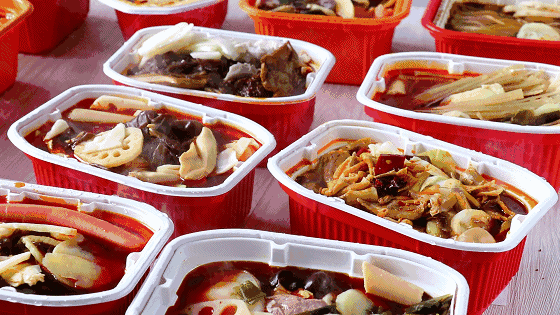
The convenience of self-heating rice comes from the self-heating packet. This packet contains a mixture of substances such as magnesium, iron, and salt. When in contact with water, these substances will react chemically, generating a large amount of heat sufficient to heat the water and cook the food in the container. With just a few simple steps, you can enjoy a delicious meal without elaborate cooking.
Evaluating the disclosed ingredients of various self-heating product brands, the self-heating packet mainly contains calcium oxide (quicklime), diatomaceous earth, activated carbon, iron powder, aluminum powder, sodium sulfate, etc. Among them, calcium oxide is the main heating component, which aids in the dispersion of calcium oxide and other heating components, and the reaction upon contact with water not only promotes the dispersion of active heating components but can also eliminate odors during the heating process. Iron powder and aluminum powder can further enhance the heating effect of calcium oxide.
The primary chemical reaction occurring during heating is between calcium oxide (quicklime) and water, producing calcium hydroxide (slaked lime). This reaction is a strong exothermic reaction, releasing a large amount of heat to boil the water, generating a significant amount of steam.
During this process, iron powder and aluminum powder also undergo oxidation reactions in alkaline conditions, both of which can release a considerable amount of heat.
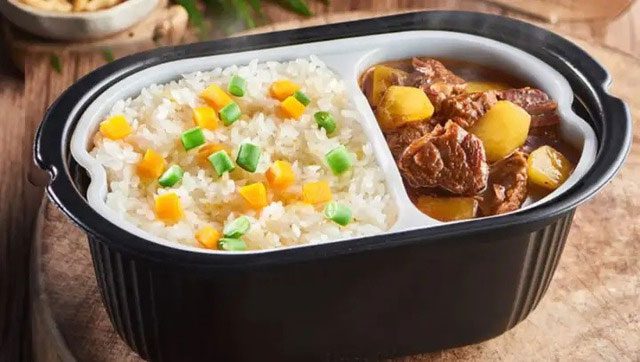
The rice in self-heating rice is not real rice.
Self-Cooking Rice – What You’re Eating Isn’t Real Rice!
Self-cooking rice utilizes the principle of quicklime generating heat upon contact with water to warm the food. So why does it usually take at least 30 minutes to cook rice in a rice cooker but only a few minutes with self-cooking rice?
In fact, the “rice” in self-cooking rice is not real rice. The production process of self-cooking rice typically involves: raw materials (broken rice or rice) being finely ground, mixed with other ingredients and food additives, then steamed and cooked through a high-temperature extrusion process, and finally cooled and shaped. This type of rice is also known as recombinant rice.
The starch structure of this recombinant rice has changed, significantly reducing the cooking time compared to whole grain rice.
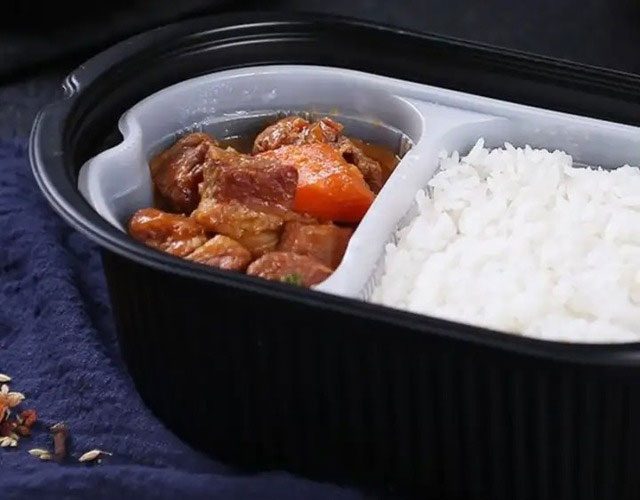
Glutinous rice flour can reduce the hardness of rice grains and increase the stickiness of recombinant rice.
Why Add Ingredients and Food Additives to the Formula?
Additional ingredients in recombinant rice include glutinous rice flour, wheat flour, etc.; additives include moisture retainers, emulsifiers…
Glutinous rice flour can reduce the hardness of rice grains and increase the stickiness of recombinant rice; gluten protein in the flour can form complexes with starch to enhance the elasticity and chewiness of rice grains; moisture retainers help to improve the texture, aroma of rice, and reduce the viscosity of rice grains; emulsifiers may be added to maintain the shape of the final product.
Adding such ingredients alters the composition of the original rice and allows for a quicker hot meal. However, after this processing sequence, the nutrition of self-cooking rice has also changed.
Self-cooking rice produced using the extrusion technology has partially broken down starch and contains more disaccharides and oligosaccharides than regular rice (the process of digesting starch in the human digestive system involves amylase breaking down starch into oligosaccharides, disaccharides, monosaccharides), from this perspective, the production of self-cooking rice replaces some of the work of digestive enzymes.
As a result, this type of rice is easier to digest: to enhance texture and flavor, some production processes will add glutinous rice flour, aiming to increase the amylopectin content in self-cooking rice so that it will interact more readily with digestive enzymes, making it easier to digest.
This is beneficial for those with insufficient digestive secretions, but it is disadvantageous for those with abnormal blood sugar levels because the blood sugar after meals with this type of rice will be higher than that of regular rice.
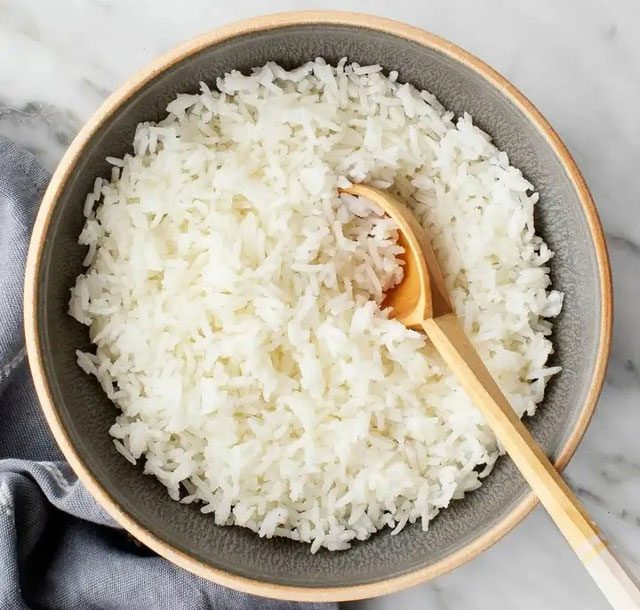
This type of rice is easier to digest, which is good for those with insufficient digestive secretions.
Regarding Nutritional Loss
The high-temperature extrusion process reduces the digestibility of plant proteins and the availability of amino acids. Self-cooking rice obtained through recombinant technology loses part of its vitamin B – with losses of vitamin B1 and vitamin B2 potentially reaching 53.8% and 19.4%, respectively.
To be precise, self-cooking rice does not have many drawbacks and is easier to digest than regular rice. However, it is not suitable for those looking to control blood sugar levels, and some B vitamins will be lost during processing.
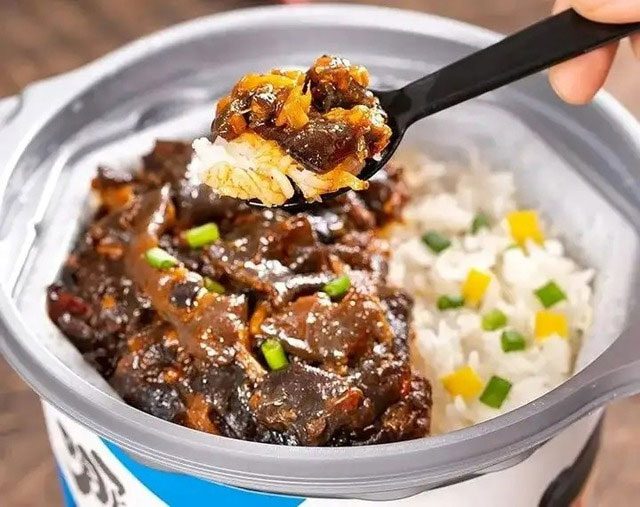
This type of rice is not suitable for those wanting to control blood sugar levels.
|
The history of self-heating food dates back to the 1940s, when U.S. military scientists began researching methods to provide soldiers with convenient and easily preserved food in wartime conditions. Their goal was to create a food product that could be heated without using fire or cooking equipment. The first self-heating food introduced to the market was self-heating soup. Self-heating soup is packaged in plastic or paper containers, containing a soup powder packet and a self-heating packet inside. When users add hot water to the container, the self-heating packet undergoes a chemical reaction and generates heat to warm the soup. Since its inception, self-heating food has continually developed and diversified. Today, there are many different types of self-heating foods on the market, including: self-heating rice; self-heating hot pot; self-heating noodles; self-heating pho; self-heating vermicelli… Self-heating food is popular for its convenience and speed. With just a few minutes of waiting, users can enjoy a hot meal without the need for cooking. |


















































